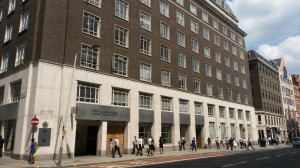Our Director, Professor Denis McCaldin, writes about both the familiar and the novel at this year’s Haydn Festival in Eisenstadt.
 “By inviting old friends such as the Austro-Hungarian Haydn Orchestra and the Academy of Ancient Music to the 2014 season, Walter Reicher, artistic director of the Haydn Festival in Eisenstadt is sure not to ruffle the feathers of his loyal audience, most of whom come from Austria and the UK year on year. However, as well as the regular performers, there have always been surprises; perhaps artists not usually known for their Haydn performances, and events with exceptional forces – such as the operas.
“By inviting old friends such as the Austro-Hungarian Haydn Orchestra and the Academy of Ancient Music to the 2014 season, Walter Reicher, artistic director of the Haydn Festival in Eisenstadt is sure not to ruffle the feathers of his loyal audience, most of whom come from Austria and the UK year on year. However, as well as the regular performers, there have always been surprises; perhaps artists not usually known for their Haydn performances, and events with exceptional forces – such as the operas.
This year the Festival has gone one better. The first two shows (on September 4th & 5th) will be of Haydn’s The Seasons (Die Jahreszeiten) – but performed as a ballet! Even though festival-goers elsewhere have gradually got used to semi-staged versions of Bach’s Passions, this marriage of oratorio and dance is exceptional. Some Haydn fans at Eisenstadt may even find it shocking!
Lovers of curiosities will also be attracted to the Orchester Purpur’s morning concert on Sept 7th which features The Clarinotts (sic). Their concert begins with Mozart & Haydn (this year’s theme) and ends with a Rigoletto-Fantasia for 3 Clarinets and Orchestra. It would be good to be there and to know if a bass-clarinet joins them for the famous quartet!”
We look forward to hearing what you think whether you have the good fortune to be there or not – do write to us or share your views on Facebook or Twitter.



